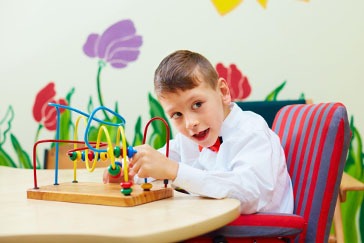 Book Appt.
Book Appt.
 Call Now
Call Now


A haemorrhagic stroke, a subtype of stroke, is a critical and life-threatening medical condition that occurs when there is bleeding into or around the brain. Unlike an ischemic stroke, which is caused by a blocked blood vessel in the brain, a haemorrhagic stroke involves the rupture of a blood vessel, leading to bleeding that can damage brain tissue.
Causes of Haemorrhagic Stroke
The primary causes of haemorrhagic stroke are related to the rupture of blood vessels in the brain. There are two main types of haemorrhagic strokes:
Risk Factors
Several factors increase the risk of experiencing a haemorrhagic stroke:
Symptoms
The symptoms of a haemorrhagic stroke can vary depending on the location and extent of bleeding. Common symptoms include:
Diagnosis
Diagnosing a haemorrhagic stroke typically involves a combination of medical assessments and imaging tests. These may include:
Treatment
The treatment of haemorrhagic stroke aims to stop the bleeding, reduce pressure on the brain, and prevent further damage. Treatment options include:
Rehabilitation and Recovery
Recovery from a haemorrhagic stroke can be a long and challenging process. Depending on the extent of brain damage, individuals may require physical therapy, occupational therapy, and speech therapy to regain lost skills and improve their overall quality of life.
Prevention and Outlook
Preventing a haemorrhagic stroke involves managing risk factors such as hypertension, not smoking, limiting alcohol consumption, and seeking prompt medical attention for conditions like cerebral aneurysms. Regular medical check-ups and adherence to prescribed medications for chronic conditions are also crucial steps in prevention.
A haemorrhagic stroke is a serious medical emergency that requires immediate attention and treatment. Understanding the causes, risk factors, symptoms, and treatment options is essential for early diagnosis and intervention. Additionally, managing risk factors and leading a healthy lifestyle can significantly reduce the risk of experiencing a haemorrhagic stroke and its devastating consequences.
SHALBY Sanar International Hospitals provides extensive medical procedures backed up with our state-of-the-art technology and a team of highly qualified & experienced clinical experts.

Patient from Iraq gets treated by Dr. Harnarayan Singh | SHALBY Sanar International Hospitals

15 year old Patient from Liberia gets treated by Dr Harnarayan Singh | Neurosurgery & Spine Surgery

Mrs. Khalida Khaleel from Iraq Overcomes Degenerative Disc & Grade 1 Spondylolisthesis

Successful Treatment of a Patient from Uzbekistan for Degenerative Disc Disease and Back Syndrome

Surviving Stroke: Bipasha Banerjee's Testimony on Timely Intervention

Successful Intraoperation Neuro Monitoring on patient Hasan from Iraq

Successful removal of Glioma using advanced machines

A multidisciplinary care worked wonders for Ms. Akhtamova from Tajikistan

Treatment for Brain Aneurysm - Al Qumairi Saeed Mohsen Awadh from Yemen
Our doctors pen down their research findings and experiences from time to time. Their words provide deep insight into the latest techniques, technologies and other advancements in healthcare. It provides expert answers to all kinds of health questions for real-life issues.
VIEW ALL




Since the day of its foundation, SHALBY Sanar International Hospitals is committed to provide comprehensive healthcare services. It regularly organizes awareness programs in its premises and encourages outdoor healthcare activities and camps with an intent to put focus on preventive healthcare.
VIEW ALL